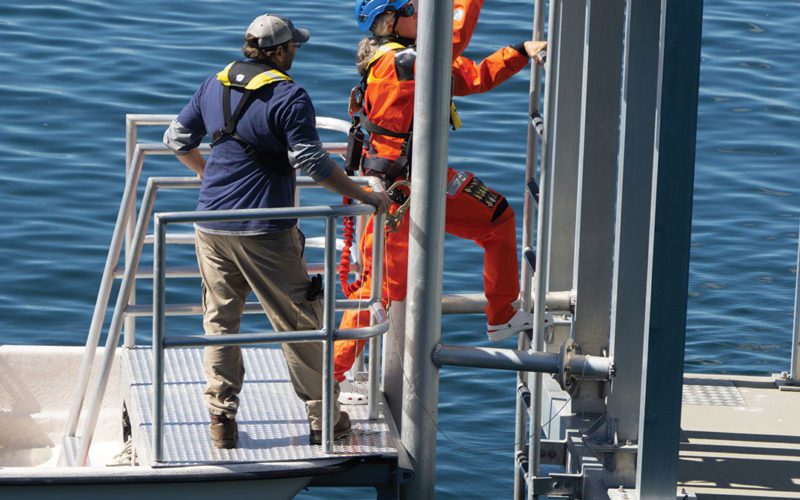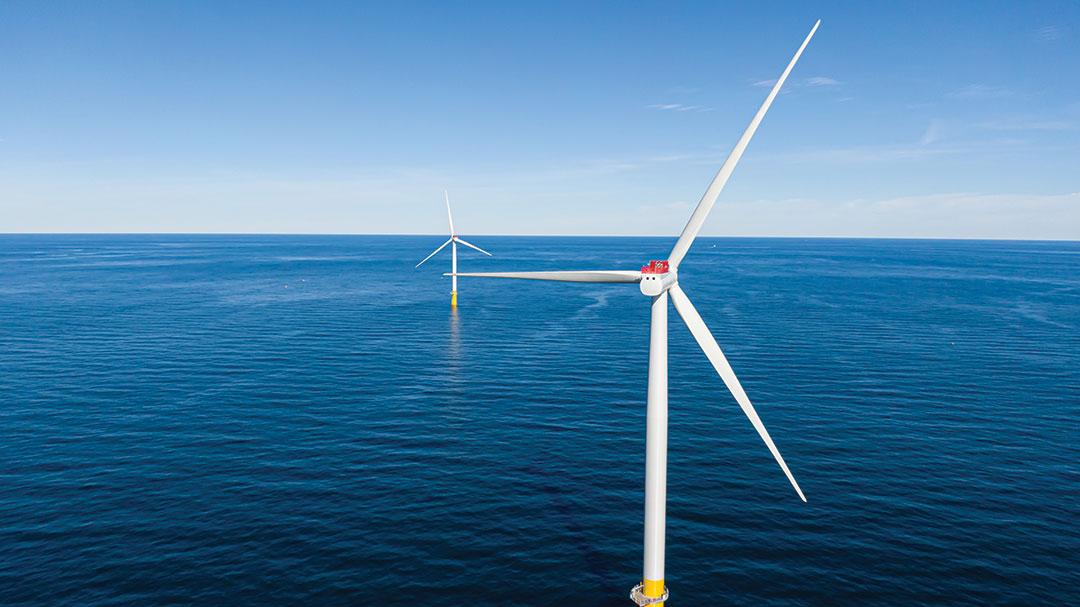
Training – Offshore Wind
Up to 25,000 trained workers needed by 2025
America’s offshore wind industry took some giant leaps forward over the last 12 months, and 2023 should bring even more activity.
This progress has reinforced the need for a robust training infrastructure to prepare thousands of workers to safely build and maintain these turbines.
There are no regulatory mandates for offshore wind training in the United States. However, the developers that are building these turbines typically require it for anyone who will work on the water, said Dan Ortega, the North America representative for the Global Wind Organization (GWO), an international training standards organization.
Given the size and scope of these projects, that will require thousands of workers to be trained within a few short years.
“I think there is enough (training capacity) to meet current demand, but certainly not enough to meet the coming demand,” Ortega told Professional Mariner recently.
The last year brought significant milestones for America’s fast-growing offshore wind industry. Shore-based construction has already begun on the 800-megawatt Vineyard Wind 1 project planned south of Martha’s Vineyard, Mass., and turbine work should commence shortly. Onshore work is underway on the 132-megawatt South Fork Wind project planned off Montauk, N.Y.
More projects are under development. Leasing activity for offshore wind projects off New York Bight and North Carolina yielded more than $4.5 billion, combined, for the U.S. Treasury, and another lease sale could happen soon for tracts off California. All told, there are 25 active offshore wind leases between Massachusetts and North Carolina, according to the U.S. Bureau of Ocean Energy Management (BOEM).
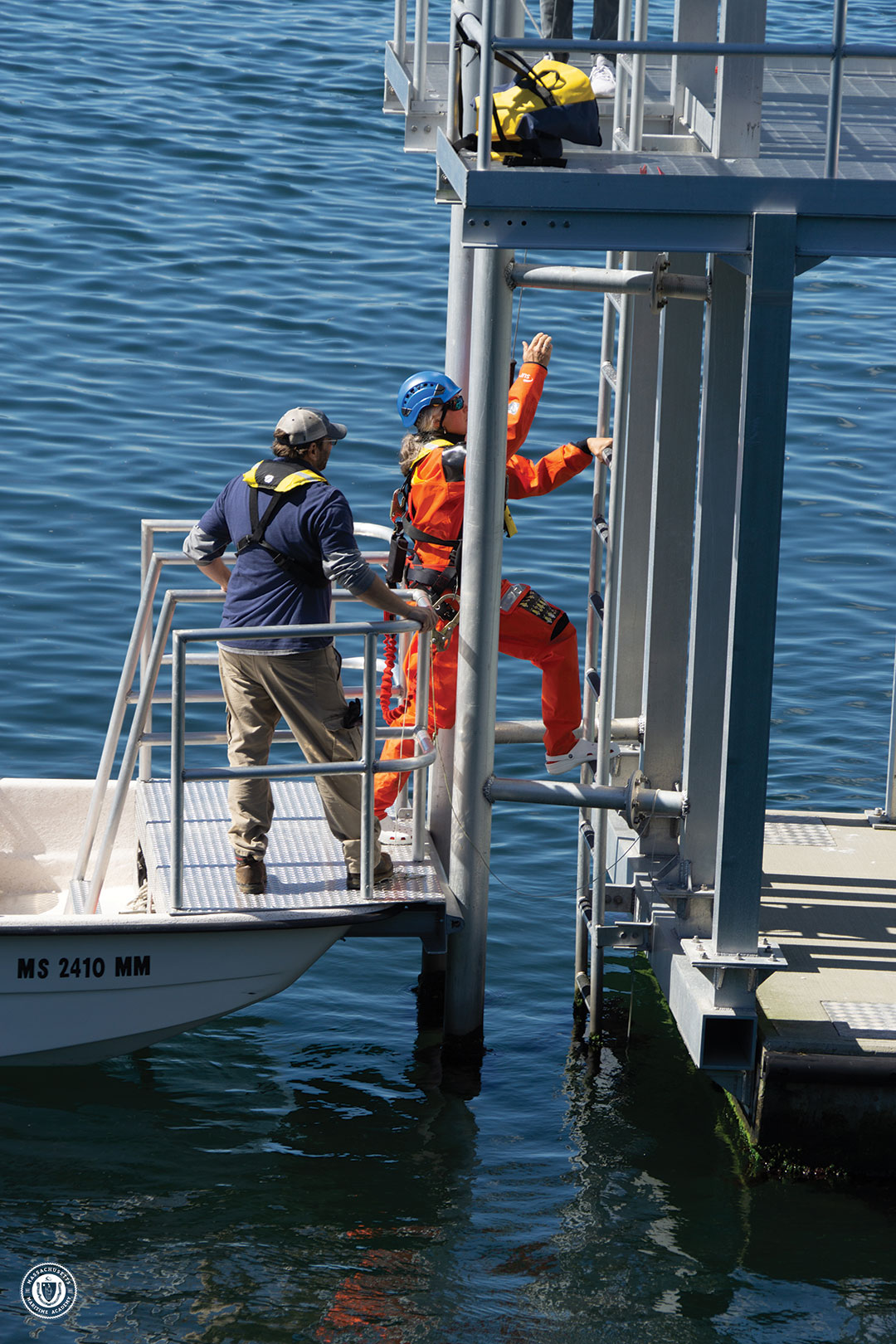
Massachusetts Maritime Academy.
The GWO training is considered the gold standard for offshore wind work around the world. The organization’s basic safety training program consists of five modules, four of which are relevant for land-based wind turbine work as well. Those four are first aid, fire awareness, manual handling and working at heights.
The fifth module, sea survival, is specifically designed for offshore wind. It incorporates lessons on using personal flotation devices and life rafts, how to safely enter the water and how to use emergency beacons. The program also involves safe transfers between crew transfer vessels and the turbine bases.
As of Oct. 1, there were seven U.S. training centers approved to teach all five modules in the GWO basic safety training tailored to offshore wind workers. Ortega expects that number will grow as more facilities begin offering sea survival training starting in 2023.
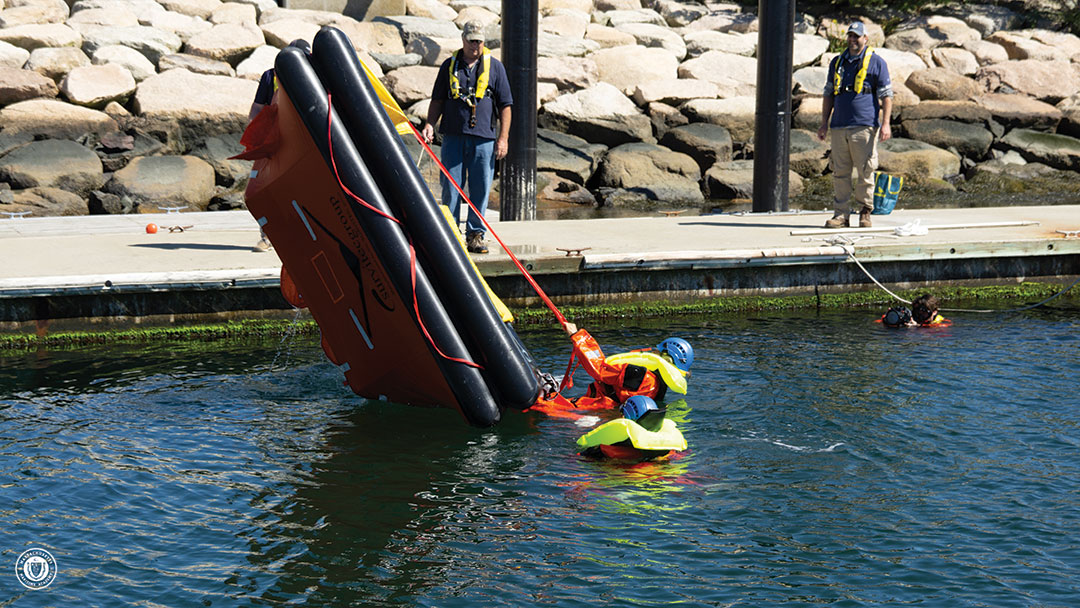
Massachusetts Maritime Academy in Bourne, Mass., has offered a GWO basic safety course since late 2019 in partnership with RelyOn Nutec, a Danish training company that operates in more than 20 countries. Mass. Maritime’s courses are full for the rest of 2022 and are expected to fill quicky in 2023, according to Capt. Mike Burns Jr., executive director of the academy’s Maritime Center for Responsible Energy.
“The demand is definitely increasing,” Burns said in a recent interview.
“Most of our course participants have come from the unions that will be involved in the construction of these projects,” he said. “The Ironworkers, Piledrivers, Laborers, Electrical (IBEW) and Millwrights have all sent members to participate. We have also had participants from several of the major developers attend Basic Safety Training.”
Many of these initial trainees will work on the Vineyard Wind 1 project. As yet, he said, there has been limited interest from folks looking to break into the offshore wind industry or change careers to focus on offshore wind. But Burns expects to see more of those as the industry matures.
Last year, the Global Wind Energy Council (GWEC) released a report predicting a surge in U.S. offshore wind installations starting in 2023. The report suggested the U.S. will need more than 25,000 workers to build and service these turbines and related infrastructure by 2025.
The GWEC released a similar report in 2022 that noted potential challenges with building this workforce in such a short time. One solution calls for retraining workers from offshore fossil fuel industries to work in the offshore wind trade. An assessment from 2019 in the United Kingdom found that roughly 70 percent of offshore oil and gas workers haskills that would apply to the offshore wind sector.
The report also found that most British offshore energy workers would consider transitioning to the offshore wind sector, and around half said they would prefer working in offshore wind. Similar data could not be found for the United States.
“The skills and expertise of workers who have designed, managed, constructed, installed and maintained large-scale and complex offshore oil and gas projects are highly valuable for the offshore wind sector, which deploys projects in similarly harsh marine environments,” the GWEC report found.
“This offers job transferability potential up and down the diverse offshore wind value chain, from steel manufacturing for foundations, substations and installation vessels, sub-sea cables to evacuate electricity and vessels for transport of equipment and workers,” it continued.
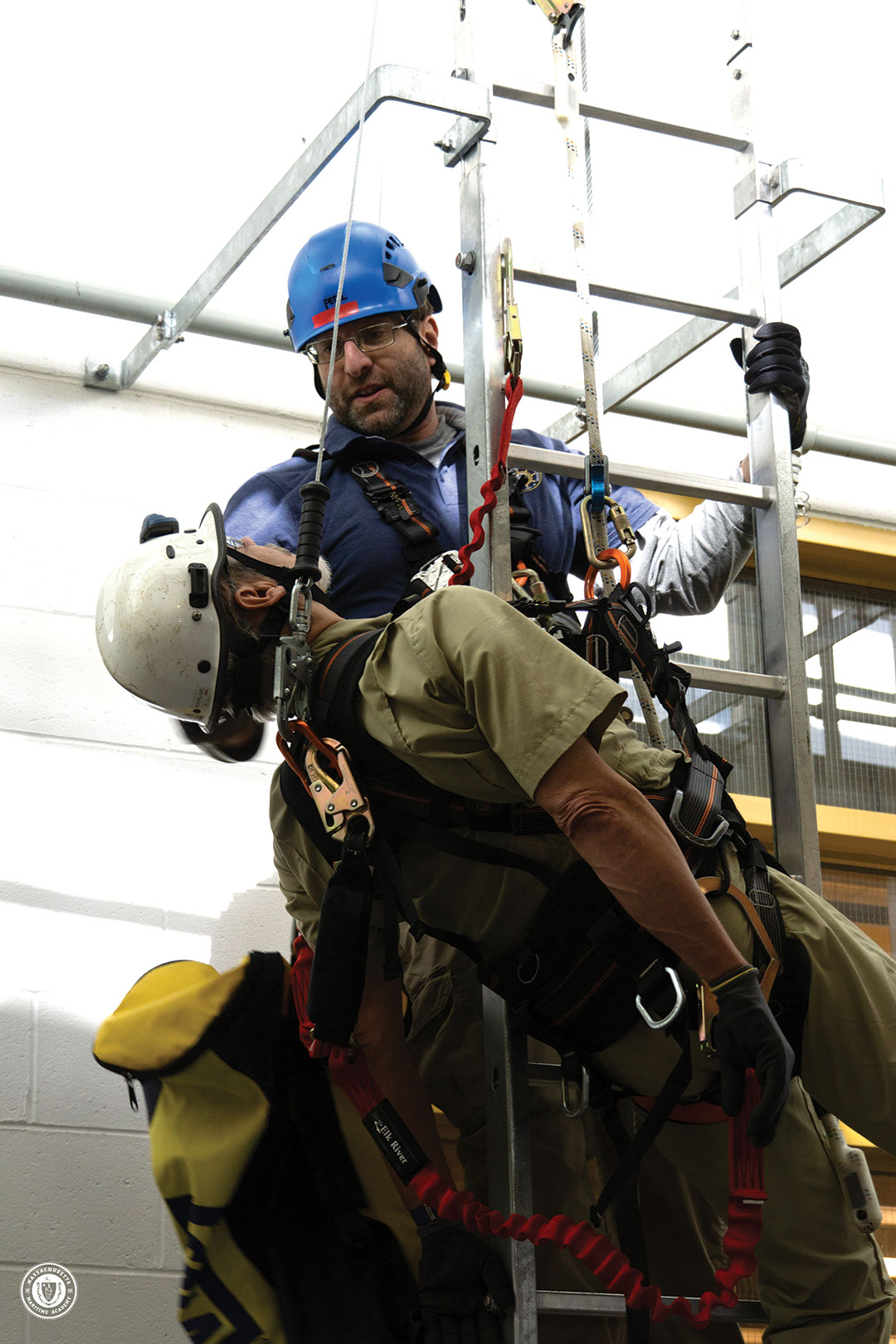
Community colleges have stepped in to help meet the future workforce demands for offshore wind. Bristol Community College, for instance, bought a facility in New Bedford, Mass., and is building a national offshore wind institute. Maersk, the global shipping giant, is partnering with the college to help build the training program, Ortega said.
Arcon Training Center, based in Salisbury, Md., has partnered with Atlantic Cape Community College in Atlantic City, N.J., on a similar endeavor. The future Wind Training Center will offer GWO training, including sea survival, its website said. It is slated to open next year.
And in Virginia, Mid-Atlantic Maritime Academy (MAMA) is GWO-approved for four basic safety modules, and it expects to receive approval for sea survival early next year. MAMA is also GWO-approved to deliver all four modules of the Basic Technical Training standard. It has partnered with Centura College, which offers a wind technician program.
MAMA is also offering the GWO Basic Technical Training Standard, the GWO Advanced Rescue Training Standard and GWO Confined Space Rescue Awareness. Mass. Maritime will begin offering several of those same advanced courses next year.
“Those are additional GWO course offerings,” Burns said. “Depending on what job you go into, you may or may not need them.”

